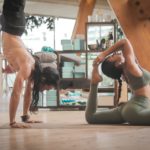20 fitness trends for 2023 have been identified by surveying a total of 125,940 people who participated in the online survey. The survey included more than 32,000 ACSM-certified professionals and those who registered for the ACSM International Health & Fitness Summit 2022. Also the Certification email opt-in list, ACSM Alliance members, ACSM professional members who subscribe to the Health & Fitness Journal (HFJ), nonmembers who subscribe to the journal, HFJ associate editors, and HFJ Editorial Board members.
Additionally, the links were provided on the HFJ website. Secondly, on the ACSM Journal’s Facebook page, and lastly on ACSM’s Instagram account. The number of respondents to the survey was 3,735. The response rate was 3%, which is similar to previous years.
What are the 20 fitness trends in 2023?
- Wearable technology
- Strength training with free weights
- Bodyweight training
- Fitness programs for older adults
- Functional fitness training
- Outdoor activities
- High-intensity interval training (HIIT)
- Exercise for weight loss
- Employing certified fitness professionals
- Personal training
- Core training
- Circuit training
- Home exercise gyms
- Group exercise training
- Exercise is Medicine
- Lifestyle medicine
- Yoga
- Licensure for fitness professionals
- Health/well-being coaching
- Mobile exercise apps
1. Wearable Technology
Wearable technology, also known as wearables, is a category of electronic devices that can be worn as accessories, embedded in clothing, implanted in the user’s body, or even tattooed on the skin. The rapid adoption of such devices has placed wearable technology at the forefront of the Internet of Things (IoT).
Wearables are:
- Fitness trackers
- Smart jewelry
- Safety wearables
Many fitness apps, such as Nike Training Club, that are used on smartphones can be used simultaneously on smartwatches. This fact helps utilize the apps in an even better way – the smartwatch becomes your digital coach, with no need to carry your phone.
2. Strength Training with Free Weights
Free weights, barbells, kettlebells, dumbbells, and medicine ball classes do not just incorporate barbells into another functional class or activity. Gym instructors start by teaching the proper form for each exercise and then progressively increase the resistance once the correct form is accomplished.
Free weights are ideal for working slow, controlled movements. Other advantages of free weights are that they mimic real-world movements and they target larger muscle groups, working more muscles in one exercise at a time. They require stabilizing muscles so one must balance to perform the exercises. This coordination is part of the reason they are more natural movements that can help in day-to-day activities. Common disadvantages are that they are intimidating to beginners and some exercises require a spotter.
3. Bodyweight Training
Bodyweight exercises are so convenient. You can start your workout in the living room or garden – and they help you build muscle and strength without a gym membership or buying more or less expensive equipment and gear. Bodyweight training (or calisthenics) is among the Fitness Trends In 2023 because it is affordable and convenient. You can do it wherever there’s enough space to move.
Bodyweight exercises are also easy to modify, but it takes some creativity, body awareness, and practice. For example, beginners can do push-ups while kneeling on the floor and advanced athletes can increase the number of reps.
4. Fitness Programs for Older Adults
Exercise may help older adults improve their heart and lung health, protect their brains, and may even reverse early mental decline. Exercise may also help older adults improve physical function, reduce limitations (such as knee osteoarthritis), and reduce pain.
There are four different categories of exercise recommended for older adults:
- Endurance exercise (cardio or aerobic exercise)
- Resistance exercise (strength training)
- Balance training
- Stretching or flexibility
The key to fitness is to do all four of these major types of exercise on a regular basis and to increase the level of intensity over time. Older adults are recommended to exercise 150 minutes per week.
5. Functional Fitness Training
Functional fitness training is a type of strength training that readies your body for daily activities. These exercises equip you for the most important type of physical fitness, the kind that preps you for real-life, daily living stuff like bending, twisting, lifting, loading, pushing, pulling, squatting, and hauling. Most functional fitness contains multi-joint movement patterns that involve your knees, hips, spine, elbows, wrists, and shoulders, which all build strength and improve your range of motion.
6. Outdoor Activities
This trend for health and fitness professionals to offer outdoor activities for their clients began in 2010. In that year, outdoor activities ranked no. 25 in the annual survey, and it ranked no. 27 in 2011. This year it is number 6 in 20 fitness trends for 2023.
Outdoor activities are:
- Running
- Biking
- Hiking
- Inline skating
- Swimming
- Stand-Up Paddleboarding
More outdoor activities such as small group walks, group rides, or organized hiking groups have become more prevalent in recent years. For 2021, outdoor activities ranked no. 4. Outdoor activities can either be short events, daylong events, or planned weeklong hiking excursions.
7. High-Intensity Interval Training
High-intensity interval training HIIT is one of the best ways to get shredded quickly. HIIT is a challenging workout and therefore it takes your cardio workout to another level, as you push your pace out of your comfort zone.
High-intensity interval training involves repeated bouts of high-intensity effort followed by various recovery times. HIIT training can easily be modified for people of all fitness levels and special conditions, such as overweight and diabetes. HIIT workouts can be performed on all exercise modes, including cycling, walking, swimming, aqua training, elliptical cross-training, and in many group exercise classes.
8. Exercise for Weight Loss
Diet and exercise are equally important for losing weight. Diet has a stronger effect on weight loss. Physical activity, including exercise, has a stronger effect on preventing weight regain after weight loss. Adding aerobic and resistance training to a weight-loss program helps counter the loss of bone and muscle.
For most healthy adults, the U.S. Department of Health and Human Services recommends these exercise guidelines:
- Aerobic activity. Get at least 150 minutes of moderate aerobic activity or 75 minutes of vigorous aerobic activity a week, or a combination of moderate and vigorous activity. The guidelines suggest that you spread out this exercise over the course of a week.
- Strength training. Do strength training exercises for all major muscle groups at least two times a week. Aim to do a single set of each exercise, using a weight or resistance level heavy enough to tire your muscles after about 12 to 15 repetitions.
As a general goal, aim for at least 30 minutes of physical activity every day. If you want to lose weight, you may need to exercise more.
9. Employing Certified Fitness Professionals
Being certified is imperative to safely and effectively design fitness programs that help clients achieve their goals. Here are some of the subjects that certified personal trainers should be educated in:
- Basic exercises science
- Human movement science
- Fitness assessments
- Program design and the Optimum Performance Training (OPT) model
- Speed, agility, and quickness training
- Nutrition best practices
- Client interaction and professional development
Although getting certified and staying certified can be a hassle, the reasons for doing so are plentiful. There are at least four reasons to do so – credibility, differentiation, staying up-to-date, and lessening the liability risk.
Where you can get the fitness certification?
- FM – Fitness Mentors
- ISSA – International Sports Sciences Association
- NASM – National Academy of Sports Medicine
- ACE – The American Council on Exercise
- NCSF – National Council on Strength & Fitness
- NSCA – National Strength and Conditioning Association
- NESTA – National Exercise & Sports Trainers Association
- NCCPT – National Council for Certified Personal Trainers
- AFAA – Athletics and Fitness Association of America
- NFPT – National Federation of Professional Trainers
- ACSM – American College of Sports Medicine
10. Personal Training
One-on-one personal training in gyms is what many people have in mind when they think of personal training, and it is indeed a perfect way to get into shape. With 1:1 training, you benefit from a training program customized to your needs, with a professional trainer guiding you throughout an entire session. This setup also helps you stay disciplined and focused, and ensures that you make the most of your time at the gym.
Certified personal trainers will create a customized program to fit your needs as they motivate and hold you accountable to reach your goals, meet them, and set new ones.
11. Core Training
12. Circuit Training
13. Home Exercise Gyms
Using a home gym may encourage people to exercise regularly. Several companies sell home gyms that are suitable for people of all fitness levels. Many home gyms are portable or easy to store away, making them a good option for people with smaller workout spaces.
Home gyms will continue to be a popular alternative to going to a gym as a consequence of the global COVID-19 pandemic. People will continue to isolate themselves by staying home and taking advantage of the abundant equipment now available, along with effective online classes. Home gyms can use minimal equipment or expensive treadmills and bikes.
Last year was the first year when home exercise gyms appeared as a fitness trend in 20 fitness trends. This year it is #13 in the Fitness Trends for 2023.
14. Group Exercise Training
The term group fitness encompasses all forms of fitness that are done in a group setting, led by a personal trainer or group instructor. Many gyms offer a whole schedule of group fitness classes, such as Les Mills workouts, that include strength training, core, cardio, and cycling.
Group exercise is very popular. Nearly 40% of regular exercisers participate in group fitness classes. Group exercise training can turn working out into a fun social activity, which could lead to you continuing to do it. Any kind of exercise can help someone feel in control of their choices. Social support from a group can reinforce a sense of autonomy. Similarly, group exercise can increase feelings of mastery. Thanks to growing competence, for example, in spinning or step aerobics. And it will undoubtedly increase your connectedness with others.
Compare to 20 Fitness Trends for 2022
15. Exercise is Medicine
Exercise is Medicine (EIM) encourages physicians and other health care providers to include physical activity when designing treatment plans and to refer patients to evidence-based exercise programs and qualified exercise professionals. EIM is committed to the belief that physical activity promotes optimal health and is integral in the prevention and treatment of many medical conditions.
Exercise is Medicine is a global health initiative managed by the American College of Sports Medicine. The vision of EMI is to make physical activity assessment and promotion a standard in clinical care, connecting health care with evidence-based physical activity resources for people everywhere and of all abilities.
16. Lifestyle Medicine
The leading causes of mortality and healthcare costs worldwide are chronic diseases, resulting from lifestyle and environmental factors. The economic burden of poor lifestyle choices is no longer sustainable and impossible to ignore. Most chronic diseases are preventable. To treat the causes of these diseases and to be successful in prevention, a strong focus must be placed on lifestyle medicine aspects. Lifestyle Medicine encompasses research, prevention, diagnosis, and treatment of dysfunctions caused by a non-physiological lifestyle (lifestyle-related diseases).
Lifestyle medicine is evidence-based clinical care that supports behavior change through person-centered techniques to improve mental well-being, social connection, healthy eating, physical activity, sleep, and minimization of harmful substances and behaviors. Now #16 in 20 fitness trends for 2023.
The 6 pillars of lifestyle medicine:
- Healthy eating
- Mental wellbeing
- Healthy relationships
- Physical activity
- Minimizing harmful substances
- Sleep
Lifestyle medicine appeared for the first time in the fitness trends survey at #16 in 2020.
17. Yoga
Traditional yoga includes Hatha, Vinyasa, Ashtanga, Bikram, and Iyengar. Still, it has taken on a variety of more recent versions (including Power Yoga, Flow Yoga, Yogilates, Hot Yoga, Rocket Yoga, and many others) and is now available as on-demand videos, live classes, and books.
Yoga has so many benefits. It improves strength, balance, and flexibility. It helps with back pain relief. It can ease arthritis symptoms. It benefits heart health. Yoga relaxes you, helps you sleep better, helps you manage stress, and gives you more energy and brighter moods.
Yoga has ranked as high as #7 in Fitness Trends and has been in the top 20 since the year 2010.
18. Licensure for Fitness Professionals
It is a trend in the fitness industry to pursue the regulation of fitness professionals such as personal trainers and exercise physiologists. Licensure for fitness professionals first appeared as a fitness trend in 2018 when it was ranked #16 and #19 for 2021 and is now #18 in 20 fitness trends for 2022.
19. Health & Wellbeing Coaching
Health and wellness coaches are professionals from diverse backgrounds and education who work with individuals and groups in a client-centered process to facilitate and empower the client to achieve self-determined goals related to health and wellness.
In addition to being a mentor who holds clients accountable, health and wellness coaches are vital members of the greater healthcare team, bridging the gap between traditional healthcare and enacting sustainable and positive behavioral lifestyle changes.
Compare to 20 Fitness Trends for 2021
20. Mobile Exercise Apps
A mobile exercise app is your personal trainer in your pocket. It helps you push harder, lift heavier, and eat better. The workout apps give you cycling workouts on the best exercise bikes, running sessions on the best treadmills, or strength training with the best home gym equipment. Some are completely free to use, others require you to pay a monthly subscription to use them.
It was estimated in 2020 that over 71,000 health and fitness apps were launched globally (24,000 in the Apple App Store and 47,000 in the Google Play Store). Mobile exercise apps ranked no. 20 in the 2019 survey, no. 25 in 2020, no. 12 in 2021, and newly #16 in 20 fitness trends for 2022, this year it is #20.
…
How will 20 fitness trends in 2023 change your approach to fitness?
Compare to 20 Fitness Trends for 2021
Compare to 20 Fitness Trends for 2022
Healthy & Exercise
Healthy & Exercise aggregates the best health and fitness websites for perfect training, supplements and foods tips, and health and lifestyle improvement. To see and visit any of the websites, check out this page.
Tags: Bodyweight Training, Exercise is Medicine, HIIT, Wearables, Yoga




Very interesting article!
Thanks, Giorgio! Which fitness trend is your favorite?